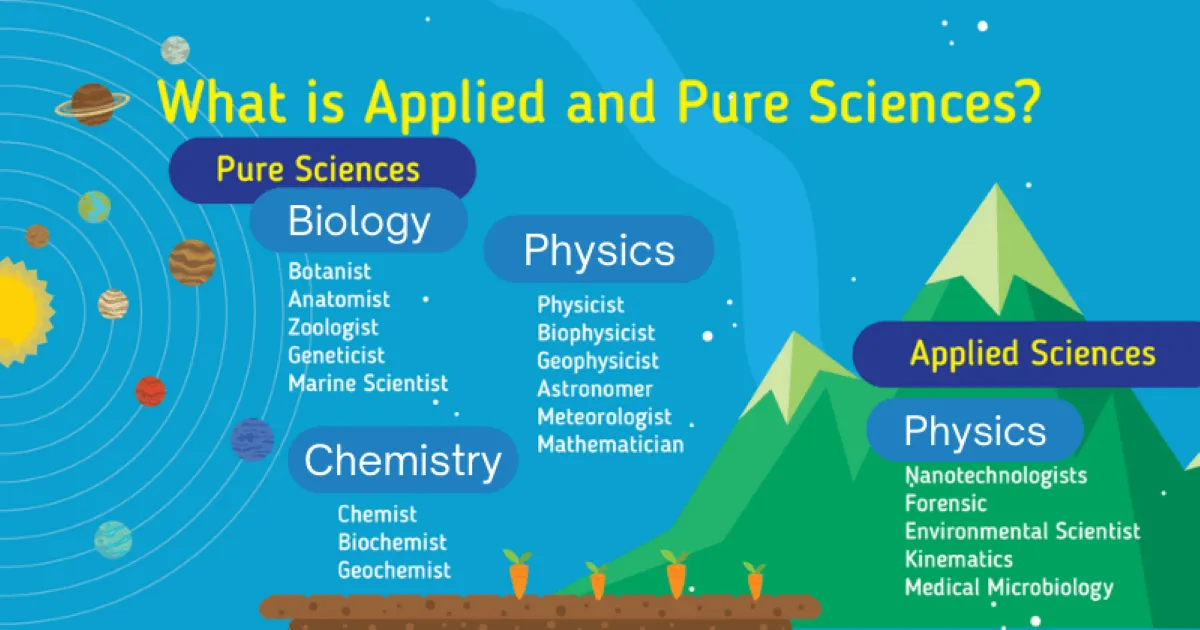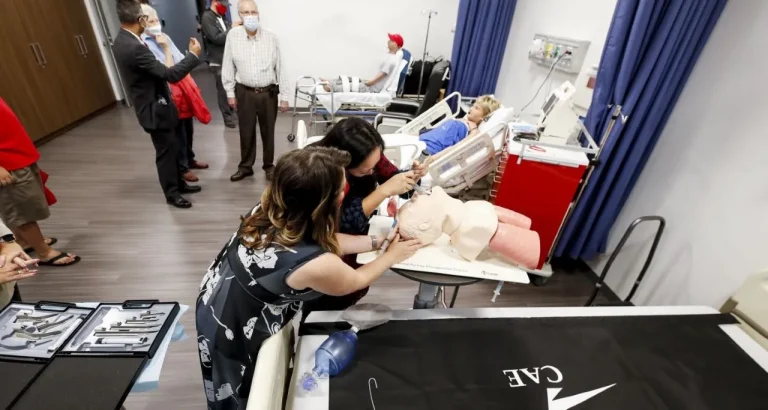Basic Science Vs Applied Science: A Complete Breakdown
When we think of ‘science’, both basic science and applied science come to mind. But what exactly is the difference between the two? In this comprehensive guide, we dive into the distinctions around goals, processes, outcomes, and more.
If you’re short on time, here’s a quick answer to your question: Basic science aims to expand knowledge and theories through fundamental research. Applied science uses scientific knowledge to solve real-world problems and develop practical applications.
By understanding how these two types of science contrast and complement each other, you’ll gain better insight into the diverse branches of science and how they impact society. Let’s analyze the key differences between basic and applied science across various parameters.
Goals and Focus
Basic science and applied science may sound similar, but they have different goals and focus. Basic science, also known as pure or fundamental science, is driven by curiosity and the desire to expand our knowledge and understanding of the natural world.
It aims to uncover fundamental principles and laws that govern the universe, without immediate practical applications in mind.
On the other hand, applied science, also known as technology or engineering, is focused on using scientific knowledge to develop practical solutions to real-world problems. It takes the discoveries made in basic science and applies them in a way that benefits society.
Applied science is all about finding innovative ways to improve our daily lives and address specific challenges.
Basic Science: Expanding the Boundaries of Knowledge
Basic science is like exploring uncharted territories, driven by curiosity and the desire to understand the world around us. Scientists in this field conduct research to uncover new information and reveal the underlying principles of nature.
They may study the behavior of subatomic particles, investigate the origins of the universe, or explore the intricate workings of the human brain.
Basic science lays the foundation for future discoveries and technological advancements. Many breakthroughs in applied science and technology have their roots in basic scientific research. For example, the development of the internet and modern telecommunications would not have been possible without the fundamental understanding of electromagnetism and quantum mechanics.
Applied Science: Practical Solutions for Everyday Challenges
Applied science takes the knowledge gained from basic science and applies it to solve practical problems. It is focused on finding tangible solutions that can have a direct impact on our daily lives. Scientists and engineers in this field work on developing new technologies, designing efficient processes, and creating innovative products.
Applied science encompasses a wide range of disciplines, from medicine and agriculture to engineering and computer science. It is responsible for advancements such as medical treatments, renewable energy sources, and communication technologies.
Without applied science, many of the conveniences and advancements we enjoy today would not exist.
Finding the Balance
Both basic science and applied science are crucial for societal progress. While basic science expands our understanding of the natural world, applied science translates that knowledge into practical applications that improve our lives.
They are two sides of the same coin, with each contributing to the overall advancement of humanity.
It is important to strike a balance between the two. Basic science provides the building blocks for applied science, and applied science feeds back into basic science by posing new questions and challenges.
This symbiotic relationship between the two ensures a continuous cycle of discovery, innovation, and improvement.
Motivations and Values
When it comes to the motivations and values behind basic science and applied science, there are some key differences to consider. Basic science, also known as pure or fundamental science, is driven by curiosity and a desire to expand knowledge.
Scientists engaged in basic science research are motivated by discovering new phenomena, understanding the fundamental principles of nature, and advancing scientific theories.
On the other hand, applied science is motivated by practical concerns and the desire to solve real-world problems. Applied scientists aim to take the knowledge gained from basic science and apply it to create useful products, technologies, and solutions.
Their work is often driven by the need to improve the quality of life, enhance efficiency, or address specific challenges in various fields.
Curiosity and Exploration
In basic science, curiosity is the main driving force. Scientists are fascinated by the unknown and seek to unravel the mysteries of the universe. They are driven by a deep desire to understand how things work, and they often ask questions like “Why?” and “How?”
without necessarily having an immediate practical application in mind.
Applied science, on the other hand, is fueled by a different kind of curiosity – a curiosity to find solutions to real-world problems. Applied scientists are motivated by the desire to make a positive impact on society and improve people’s lives. They ask questions like “How can we solve this issue?”
and “What can we do to make things better?”
Knowledge Expansion vs Problem Solving
In basic science, the primary goal is to expand our understanding of the natural world. Scientists delve deep into their chosen fields of study, conducting experiments, gathering data, and formulating theories to explain various phenomena.
They focus on building a solid foundation of knowledge that can be built upon by future generations of scientists.
Applied science, on the other hand, is focused on practical applications. Applied scientists take the knowledge gained from basic science research and use it to develop solutions to specific problems. They apply scientific principles and methods to create technologies, products, and systems that address real-world challenges.
Collaboration and Interdisciplinarity
Both basic science and applied science require collaboration and interdisciplinary approaches, but the nature of collaboration differs. Basic science research often involves collaborations among scientists from different disciplines, as they work together to explore complex phenomena and tackle challenging questions.
This interdisciplinary collaboration helps broaden perspectives and leads to innovative breakthroughs.
Applied science, on the other hand, often involves collaborations between scientists and engineers, as well as professionals from other fields such as medicine, agriculture, and environmental science.
These collaborations aim to bridge the gap between scientific knowledge and practical applications, ensuring that the solutions developed are effective and relevant.
For more information on the motivations and values behind basic science and applied science, you can visit https://www.ncbi.nlm.nih.gov/pmc/articles/PMC3059457/.
Processes and Methods
When it comes to the processes and methods used in basic science and applied science, there are some key differences to consider. In basic science, the focus is primarily on conducting research and gathering knowledge for the sake of understanding the natural world.
Scientists in this field often use methods such as observation, experimentation, and data analysis to uncover new information and form theories. The emphasis is on expanding our fundamental understanding of how things work.
On the other hand, applied science takes the knowledge gained from basic science and applies it to solve real-world problems. This field is more focused on practical applications and uses scientific principles to develop new technologies, products, and processes.
The methods used in applied science involve taking the theories and concepts from basic science and testing them in real-world scenarios to find practical solutions.
Experimental Design
In basic science, experimental design is often more flexible and open-ended. Scientists have the freedom to explore various hypotheses and conduct experiments to test them. The goal is to gather as much data as possible to gain a deeper understanding of the subject being studied.
Applied science, on the other hand, requires a more structured and goal-oriented experimental design. Scientists in this field need to design experiments that can provide practical solutions to specific problems.
The focus is on efficiency and finding the most effective solution to address a particular issue.
Data Analysis
Data analysis plays a crucial role in both basic science and applied science. In basic science, researchers analyze data to identify patterns, correlations, and trends. This helps them formulate theories and make predictions about the natural world.
In applied science, data analysis is used to evaluate the effectiveness of practical solutions. Scientists analyze data to determine whether the proposed solution is achieving the desired outcomes. This allows for adjustments and improvements to be made, ensuring that the solution is efficient and meets the intended goals.
Collaboration
Both basic science and applied science involve collaboration, but the nature of collaboration differs between the two. In basic science, collaboration often occurs within the scientific community, with researchers sharing information, exchanging ideas, and building on each other’s work.
This collaboration helps to advance scientific knowledge and understanding.
Applied science, on the other hand, often involves collaboration between scientists and professionals from other fields. For example, engineers, medical professionals, and industry experts may collaborate with scientists to develop practical solutions to specific problems.
This multidisciplinary approach allows for a broader range of expertise and perspectives to be brought to the table.
Outcomes and Impact
Both basic science and applied science have their own unique outcomes and impact on society. Let’s take a closer look at each:
Basic Science Outcomes
Basic science, also known as pure or fundamental science, is driven by curiosity and the desire to expand our understanding of the natural world. The outcomes of basic science research are often intangible, but they lay the foundation for future discoveries and innovations.
Through basic science, scientists explore the fundamental principles and mechanisms that govern the universe.
For example, the discovery of the structure of DNA by James Watson and Francis Crick in 1953 was a result of basic scientific research. This landmark discovery paved the way for advancements in genetics, biotechnology, and personalized medicine, ultimately revolutionizing the field of biology.
The impact of basic science can be long-term and far-reaching. It provides the building blocks for applied science and serves as a catalyst for technological advancements. Basic science research fuels innovation and drives economic growth, as new discoveries often lead to the development of new industries and job opportunities.
Applied Science Outcomes
Applied science, on the other hand, focuses on the practical application of scientific knowledge to solve real-world problems. The outcomes of applied science research are often tangible and have immediate relevance to society.
Applied science aims to address specific challenges and improve existing technologies.
For instance, in the field of medicine, applied science research has led to the development of life-saving drugs, medical devices, and treatment protocols. These advancements directly impact patient care and contribute to improved health outcomes.
Applied science also has a significant impact on industries such as engineering, agriculture, and environmental science. It drives innovation by developing new technologies, improving efficiency, and finding sustainable solutions to global challenges.
Comparison of Outcomes
While basic science and applied science have different outcomes, they are interconnected and depend on each other for progress. Basic science provides the knowledge and understanding that applied science builds upon to create practical solutions.
| Basic Science | Applied Science |
|---|---|
| Expands knowledge | Applies knowledge |
| Long-term impact | Immediate impact |
| Drives innovation | Solves real-world problems |
| Foundation for applied science | Builds upon basic science |
Examples and Applications
Both basic science and applied science have their own unique examples and applications in various fields. Let’s take a closer look at some of these examples:
Basic Science Examples:
- Genetics: Basic science research in genetics focuses on understanding the fundamental principles of inheritance and genetic variations. This knowledge is then applied in various fields such as medicine, agriculture, and forensic science.
- Quantum Mechanics: The study of quantum mechanics in basic science has paved the way for technological advancements in fields like electronics, computing, and telecommunications. It has also contributed to the development of quantum computing and cryptography.
- Astrophysics: Basic science research in astrophysics helps us understand the fundamental processes occurring in the universe, such as the formation of galaxies, the behavior of stars, and the nature of dark matter. This knowledge expands our understanding of the cosmos.
Applied Science Applications:
- Medical Science: Applied science plays a crucial role in the development of new medical treatments and technologies. For example, the application of biotechnology has led to the development of vaccines, gene therapies, and personalized medicine.
- Environmental Science: Applied science is used to address environmental issues and develop sustainable solutions. This includes studying pollution control methods, renewable energy sources, and conservation strategies.
- Engineering: Applied science is at the core of engineering disciplines. From civil engineering to aerospace engineering, the principles of applied science are used to design and create structures, machines, and systems that improve our daily lives.
It’s important to note that while basic science focuses on expanding knowledge and understanding, applied science takes that knowledge and applies it to solve real-world problems. The examples and applications provided here are just a glimpse into the vast range of possibilities offered by both disciplines.
For more detailed information on basic science and applied science examples and applications, you can visit reputable sources such as Nature and ScienceDirect.
Conclusion
In summary, while basic science seeks general knowledge, applied science uses that knowledge to solve practical problems. Both are vital – basic science lays the foundation of principles and discoveries, while applied science turns those into innovations that benefit society.
By comparing factors like motivations, processes, outcomes and real-world examples, we clarify the unique value of both basic and applied scientific pursuits. Scientists often blend these approaches for maximum impact.
Next time you read about an exciting new discovery or technology, you can better appreciate the interconnected roles of basic and applied science. Both are essential for advancing our scientific understanding and bettering human life.







